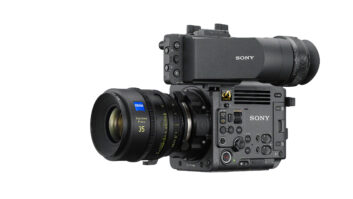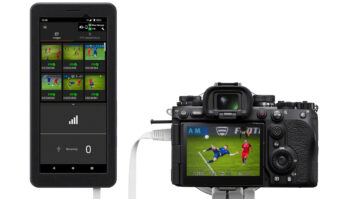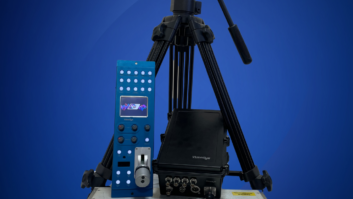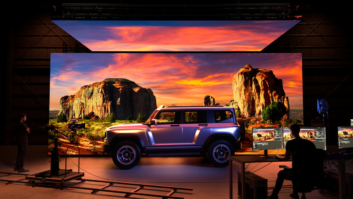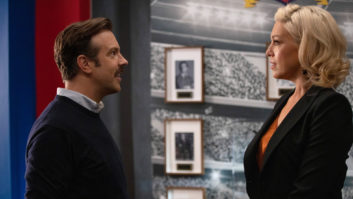The new SRW-9000 HDCAM SR camcorder from Sony has been designed to be the most future-proof camera it has yet made, writes David Fox.
The 2/3-inch 3 CCD model, which records to tape, will be upgradeable so that it can instead have a single 35mm CCD and a solid-state recorder. The 1920×1080 camera had been announced at NAB, but its future upgrade path (35mm in 2010, solid state in 2011) was only announced last week at the Power of Images event in London, shortly before the first units ship to European dealers Band Pro and TopTeks.
“This is the first time we’ve created such a modular system. It’s the camcorder for the future, with the media of the future. It’s the camcorder for life,” said Olivier Bovis, Sony’s general manager, product marketing. “The F900 has lasted ten years and we want the 9000 to last as long.”
Sony also wanted its first one-piece SR camcorder “to be as affordable as possible,” so it costs 7% less than the F900 (at about EUR50,000), “which is astonishing, because this product is amazing,” said Bovis. It has also cut the cost of HDCAM SR tapes by 40%.
Bovis believes the camera will be “a good natural history camcorder, as it can have the high framerates and long lenses made possible by 2/3-inch, and it can be used for top-end drama with the 35mm block.” The SRW-9000 has been designed to be heat efficient, enabling it to use a slow speed fan for cooling, so it should be quieter than even the F900R.
HDCAM SR can cater for 3D and 1080p50 recording, and is a file-based format, despite being on tape. “Users want maximum transfer speed, increased storage efficiency and an open platform,” said Bovis, which is why Sony has helped develop the new MXF-wrapped MPEG-4 Simple Studio Profile: an open codec, plus a lower more broadcast-friendly bitrate, that keeps the SR quality.
Besides SR HQ at 880Mbps, and SQ SR at 440Mbps, there will also be SR Lite at 220Mbps, recording 10-bit 4:2:2 at 50p. It is “a great resolution for TV and enables sharing more easily as it uses less bandwidth,” Bovis said. Avid already supports it.
HDCAM SR tapes contain Tele-File, contactless memory that stores an EDL, for more efficient importing. Now it will also include colour management data (CDL), so users will be able to “almost pre-colour correct the picture on-set.” It has been developed in conjunction with FilmLight, and will operate with its on-set and post production systems to speed up the colour grading process.
The solid-state upgrade will use new SR memory cards. Compared to its SxS cards, which have a maximum throughput of 880Mbps, the SR media will be able to record in excess of 5Gbps. This would allow a single card to record eight streams of HD (or one of 4k) – although whether it will record eight streams will depend on how Sony builds the recorder. Sony hopes to be able to offer a 1TB card, which could record six hours of SR quality, but there will probably be lower capacity cards too, depending on the price point. There will also be memory adapters for Sony’s F35 and F23.
SR memory also promises to be the first nonlinear media to be RAID 5 protected, an important consideration for insurance companies on movie productions, and will be able to record up to 240 frames per second, 1080p 3D and 4k. It will, however, require a new card reader as it won’t fit the standard Express Card slot used by SxS.
For archiving solid-state media, Bovis suggested using SR tapes, which can already record 4k as a data stream and share Avid content for project data storage. Sony’s latest recorders are now two times faster, can record 4:2:2 much faster for archive, and already support the new MXF and SR Lite (current recorders are upgradeable). A small SR tape can record 48 minutes at 25p, or 24 minutes of 50p or 4:4:4 at 880Mbps.


